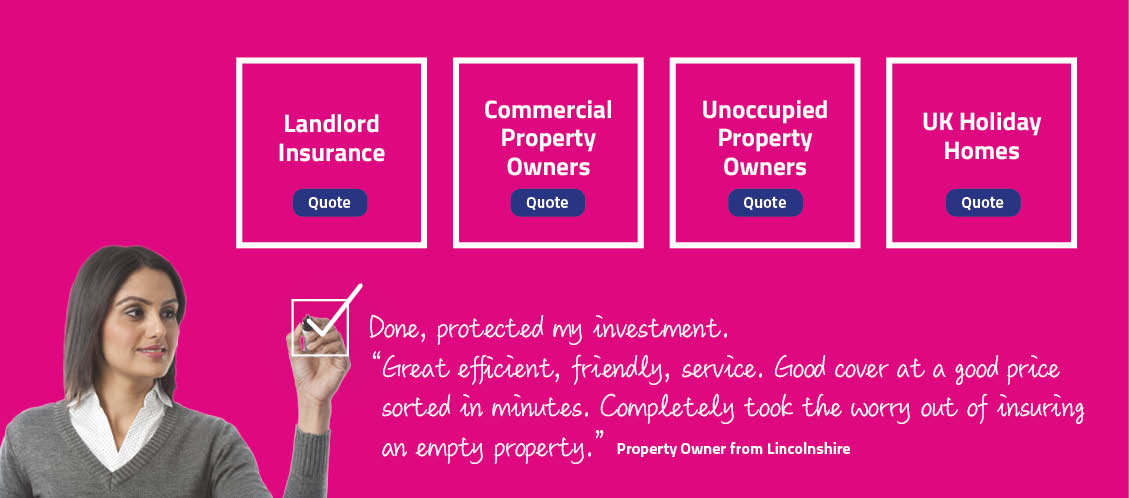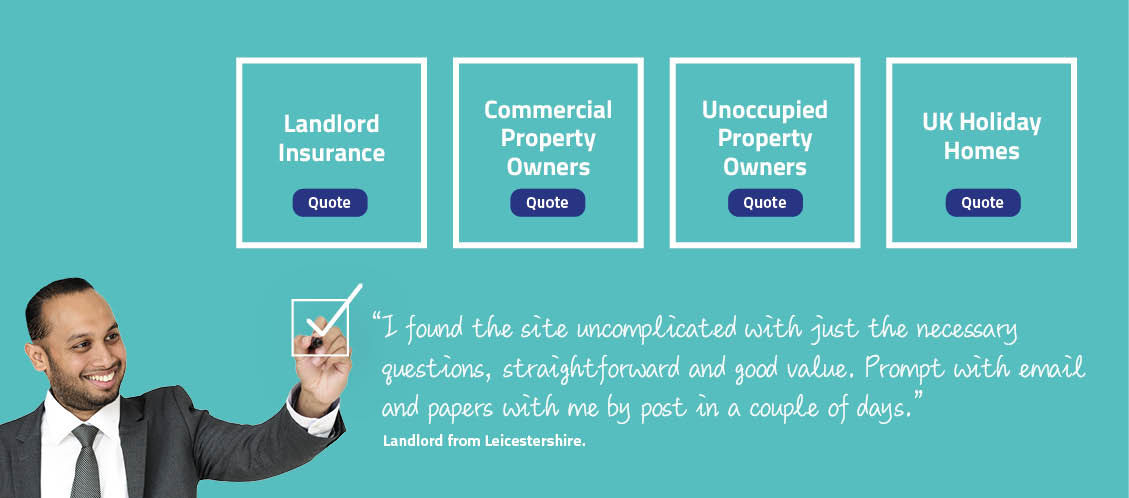Buy to let property insurance (also known as landlord insurance) is cover specifically designed to protect the principal assets of a buy to let business.
The insurance recognises that anyone instantly becomes a landlord the moment they let their property, rent out rooms or areas of a home that they also continue to occupy, or only occasionally let their home during holiday peak periods on platforms such as Airbnb.
Most important of all, once you cross that boundary into letting your home, or any part of it, your insurance requirements automatically change too. It is no longer possible to rely on the owner-occupier home buildings and contents policy that previously offered you protection – you will need to get a fresh quote for specially formulated insurance for landlords.
How is let property insurance different from home insurance?
Insurance is all about the management of risk. And the fact is that those risks are different when you compare let property insurance with regular home insurance. The principal and most obvious distinction, of course, is that a let property is regarded as a business.
For example, common sense may tell you that, however responsible they may be, tenants may not be quite as quick as an owner-occupier to spot otherwise relatively minor maintenance issues before they become more serious problems.
In fact, landlord insurance provides more than just buildings and contents cover for rental properties – it safeguards against other potential threats to the buy to let business and there may also be extra elements of cover that form part of the policy or as an add-on.
What does landlord insurance cover?
Buy to let landlord insurance is typically an essential part of any landlord’s toolkit and recognises that:
- the property in question is a vital asset used to generate the income for your business;
- it was invariably an expensive asset to buy;
- if the asset is out of action for any reason whatsoever, then your income is likely to be zero.
Landlords’ insurance takes several forms and different insurance providers will offer various terms and conditions. If you’re looking for buy to let insurance, you’ll need to ensure that your property and the business in which it plays its part are fully covered along the following lines:
Buildings insurance
- the risks to the structure and fabric of the building itself are many and varied;
- typically, landlord insurance covers risks such as fire, flooding, storm damage, escape of water, impacts, vandalism, and theft – with some, but not all policies also covering the grave consequences of subsidence and heave;
Contents insurance
- your tenants will need to arrange their own insurance for their belongings and possessions, of course, but you might want to safeguard those possessions you own with the appropriate contents insurance;
Third-party liability
- when there are tenants in your property, you are responsible for ensuring their health and safety and may be held liable if they, one of their visitors, a neighbour, or even a member of the public suffers an injury or has their property damaged;
- if you are found to be liable, you may be ordered to pay substantial damages – especially if anyone has suffered an injury – or even death;
- landlord insurance, therefore, typically offers at least £2 million worth of cover to indemnify you against such third-party liability claims;
Cover for loss of rental income
- recognising that your business relies on the income you receive from tenants, buy to let insurance typically offers a degree of compensation for that loss of rental income if your let property becomes temporarily uninhabitable and unlettable following an insured incident;
Accidental damage cover
- when you are comparing buy to let insurance, you will notice that some policies include elements of protection (such as accidental damage or malicious damage by tenants, for example) as standard – others may offer the option to pay for these as optional extras or add-ons.
What doesn’t buy-to-let insurance cover?
Most landlord insurance policies are unlikely to include the employers’ liability insurance cover you are legally obliged to arrange if you employ anyone (but for a few rare exceptions) to help run your buy to let business.
As we touched on above – buy-to-let insurance policies may vary at the individual policy level too – with the terms, conditions, benefits, and features being slightly different to that offered by another landlord insurance provider. This includes any exclusions attached to the policy.
What happens if the property is unoccupied or being renovated?
Don’t forget that from time to time your let property might be unavoidably empty and unoccupied – between rentals, while it is being renovated, for any other number of reasons.
Insurers adopt different policies towards such empty property, which is typically regarded as unoccupied once no one has been living there for a period of more than 30-45 consecutive days (the exact interval varying from one insurer to another).
What that means is that to ensure you have the most comprehensive cover for your property, it may be essential to add unoccupied property insurance when the need arises. Failure to do so could invalidate your existing insurance arrangements – and may also breach an important condition of any mortgage that requires the property to remain adequately insured at all times.
Speak to your insurance provider
If you want to be confident that your let property and business interests are protected, it’s important to make quite clear to any prospective insurance provider that the dwelling will be let.
It’s equally important to inform your insurance company – and your mortgage provider – if you change the use of your property from owner-occupied to rental (whether in full or even part).
Failing to get this right may result in a future claim being rejected. Insurance companies do have methods of checking the actual occupancy status of a property in the event of a claim being made.
Buy to let landlords’ insurance – supplemented by unoccupied property insurance when required – could make your life a lot easier in the event of a crisis. So, making sure you have appropriate cover in place to protect your buy to let business is key.
Finally, it is important to note that if you have a mortgage on the property, your mortgage provider will typically require that you always have appropriate property insurance in place at all times, to protect both your financial interests in the property.







